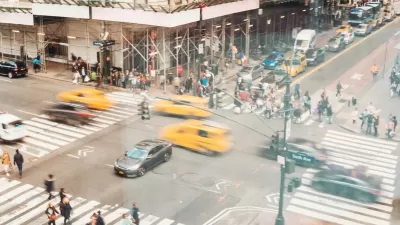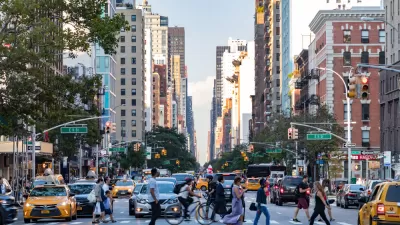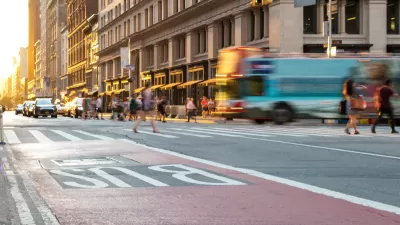The city may not have done enough to actually slow down driving in its nominal slow zones.

Paris, Iceland, and London are among the jurisdictions worldwide to adopt traffic-slowing strategies in the interest of safer streets—much of the time with success. But New York's slow zone program, launched in 2011, is a different story. Researcher Jonas Hagen found that weak implementation of the city's 28 slow zones have led to a failure to reduce traffic injuries.
New York's slow zones feature largely low-impact interventions, Hagen's report notes—like speed bumps, signs, and pavement markings. Other jurisdictions have seen success with more robust measures, as David Meyer writes for Streetsblog:
The London program, which included more physical street design changes, led to a measurable reduction in severe traffic collisions … London added raised crosswalks, raised intersections, curb extensions, pedestrian refuges, traffic diverters, mini-roundabouts, and other traffic-calming measures as part of its 20 mph zone program. And these interventions are installed at five times the rate per mile of street as New York’s speed humps.
FULL STORY: London’s Slow Zones Save Lives and New York’s Don’t. Here’s Why.

Maui's Vacation Rental Debate Turns Ugly
Verbal attacks, misinformation campaigns and fistfights plague a high-stakes debate to convert thousands of vacation rentals into long-term housing.

Planetizen Federal Action Tracker
A weekly monitor of how Trump’s orders and actions are impacting planners and planning in America.

San Francisco Suspends Traffic Calming Amidst Record Deaths
Citing “a challenging fiscal landscape,” the city will cease the program on the heels of 42 traffic deaths, including 24 pedestrians.

Defunct Pittsburgh Power Plant to Become Residential Tower
A decommissioned steam heat plant will be redeveloped into almost 100 affordable housing units.

Trump Prompts Restructuring of Transportation Research Board in “Unprecedented Overreach”
The TRB has eliminated more than half of its committees including those focused on climate, equity, and cities.

Amtrak Rolls Out New Orleans to Alabama “Mardi Gras” Train
The new service will operate morning and evening departures between Mobile and New Orleans.
Urban Design for Planners 1: Software Tools
This six-course series explores essential urban design concepts using open source software and equips planners with the tools they need to participate fully in the urban design process.
Planning for Universal Design
Learn the tools for implementing Universal Design in planning regulations.
Heyer Gruel & Associates PA
JM Goldson LLC
Custer County Colorado
City of Camden Redevelopment Agency
City of Astoria
Transportation Research & Education Center (TREC) at Portland State University
Jefferson Parish Government
Camden Redevelopment Agency
City of Claremont





























